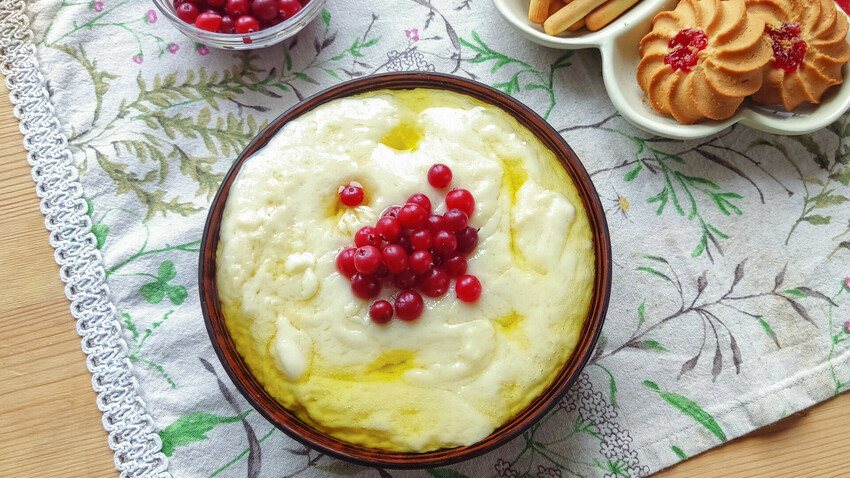
Try your hand at cooking ‘Salamata’ with bright red lingonberries.
Olga BrovkinaSalamata is a porridge-like dish that has been enjoyed by Eastern Slavs for centuries. It combines simplicity, tradition, and a touch of mysterious fortune.
The origins of salamata can be traced back to the 16th century, when it was mentioned in the Decree on the meal of the Tikhvin Monastery. This dish has remained popular throughout the centuries, serving as a staple in both everyday meals and ceremonial feasts. Its preparation involves a combination of simple ingredients, including sour cream, flour, and milk.
To create the perfect salamata, the flour and other ingredients must be kneaded together for an extended period of time before being fried over an open flame. This meticulous process ensures a smooth and creamy consistency, bringing out the dish’s delightful flavors. In some variations, salamata is infused with the aroma of onions, garlic or lard.
Salamata holds particular significance in certain regions of Russia, such as Yakutia and Buryatia, where the dish is prepared on special occasions, such as holidays and festive gatherings with esteemed guests. During these moments salamata takes on an almost sacred role, and is believed to possess the power of fortune-telling. It is said that the quality of the finished salamata can predict the outcome of any business or venture. A tasty outcome is seen as a favorable sign, suggesting that luck is on the horizon.
I added some lingonberries to my salamata, which gives the dish a delightful burst of tartness and vibrant color. Lingonberries also offer numerous health benefits, as they are rich in antioxidants and vitamins. In general, they simply make the dish more attractive.
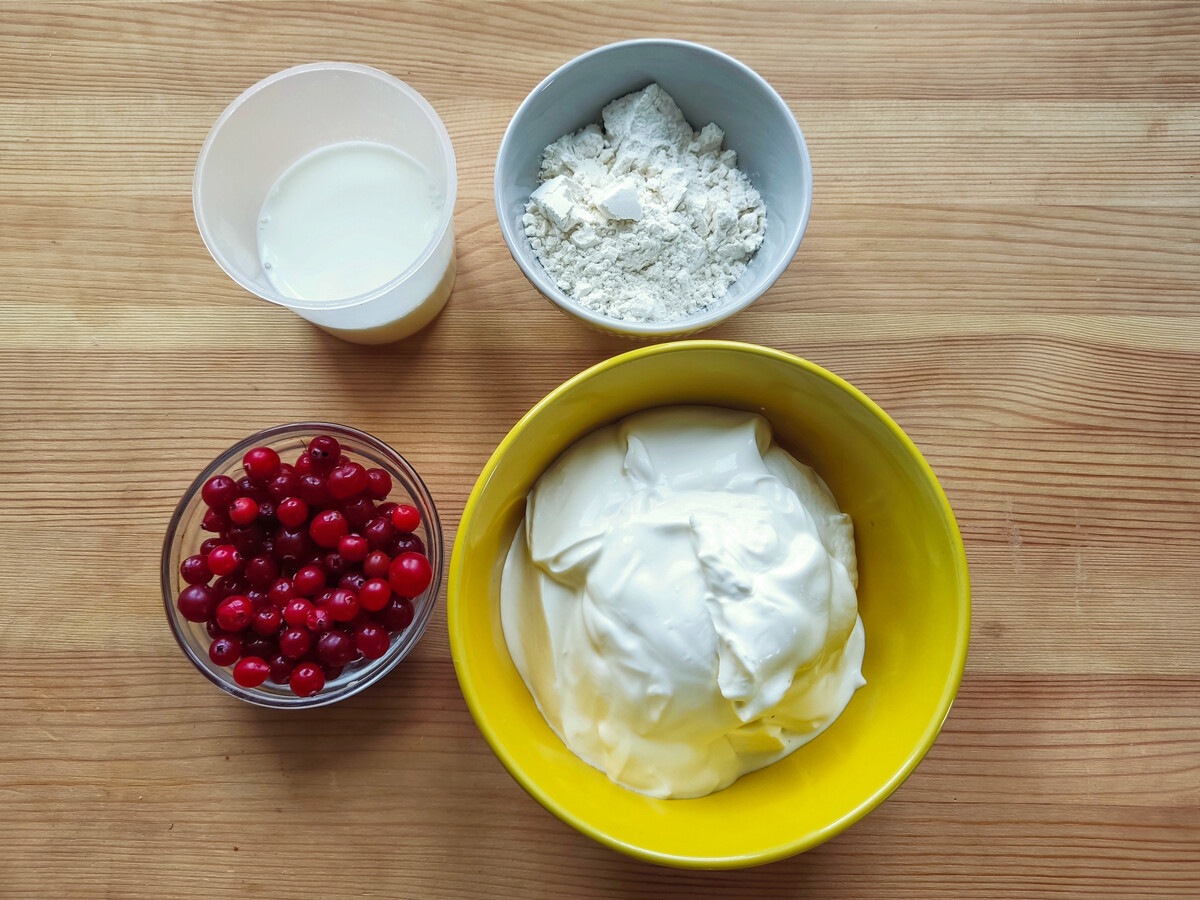
1. Take a saucepan and pour the sour cream into it. Place the saucepan with the sour cream over low heat.
2. Sift the flour separately.
3. Stirring constantly, bring the sour cream to a boil, and then gradually add the flour in small portions. Mix the ingredients together, sufficiently in order to prevent lumps from forming.

4. Once all the flour is in the saucepan and stirred well, leave the mixture to simmer while stirring constantly. Eventually, a separated butter should form on the surface of the mixture in the saucepan. You can remove and stir the butter with a tablespoon.
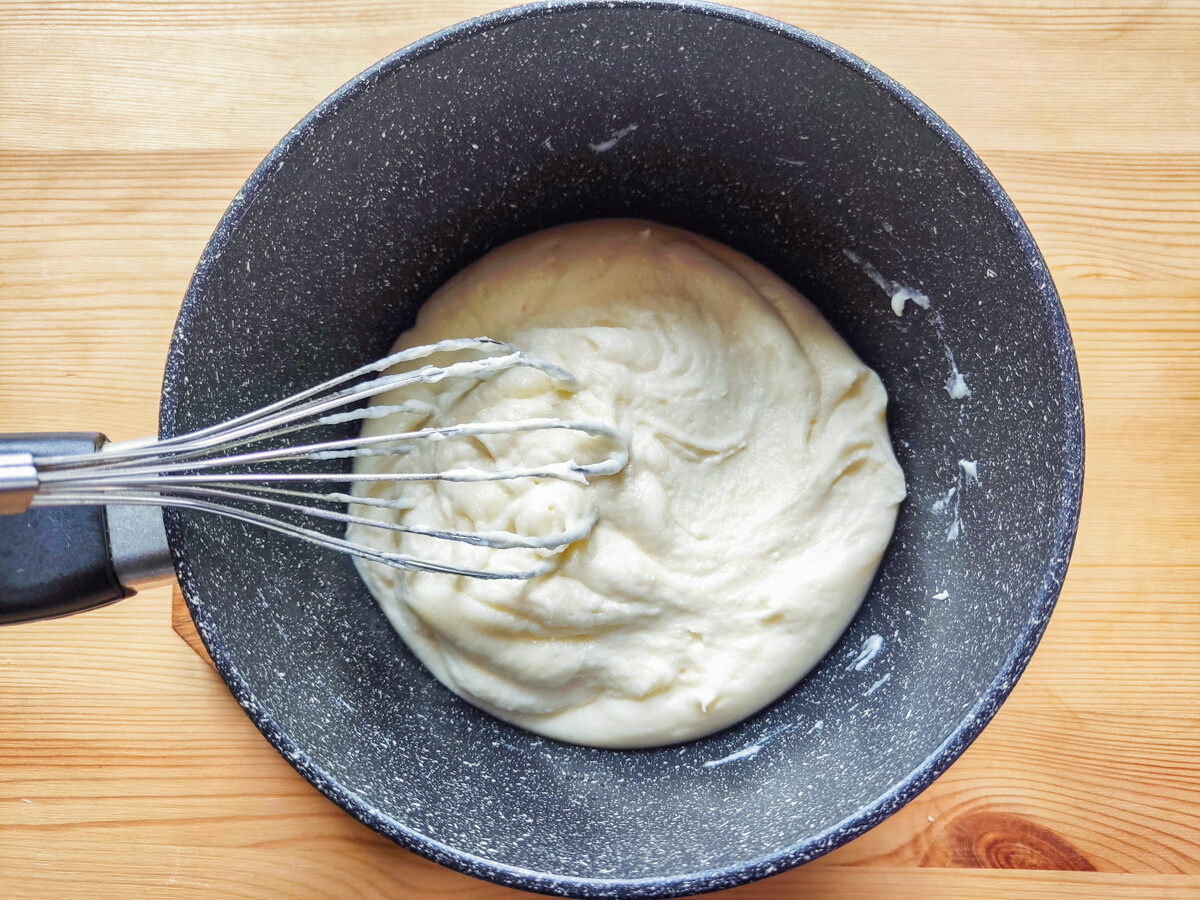
5. Pour a small amount of milk or kefir into the saucepan. Mix the ingredients together very thoroughly.
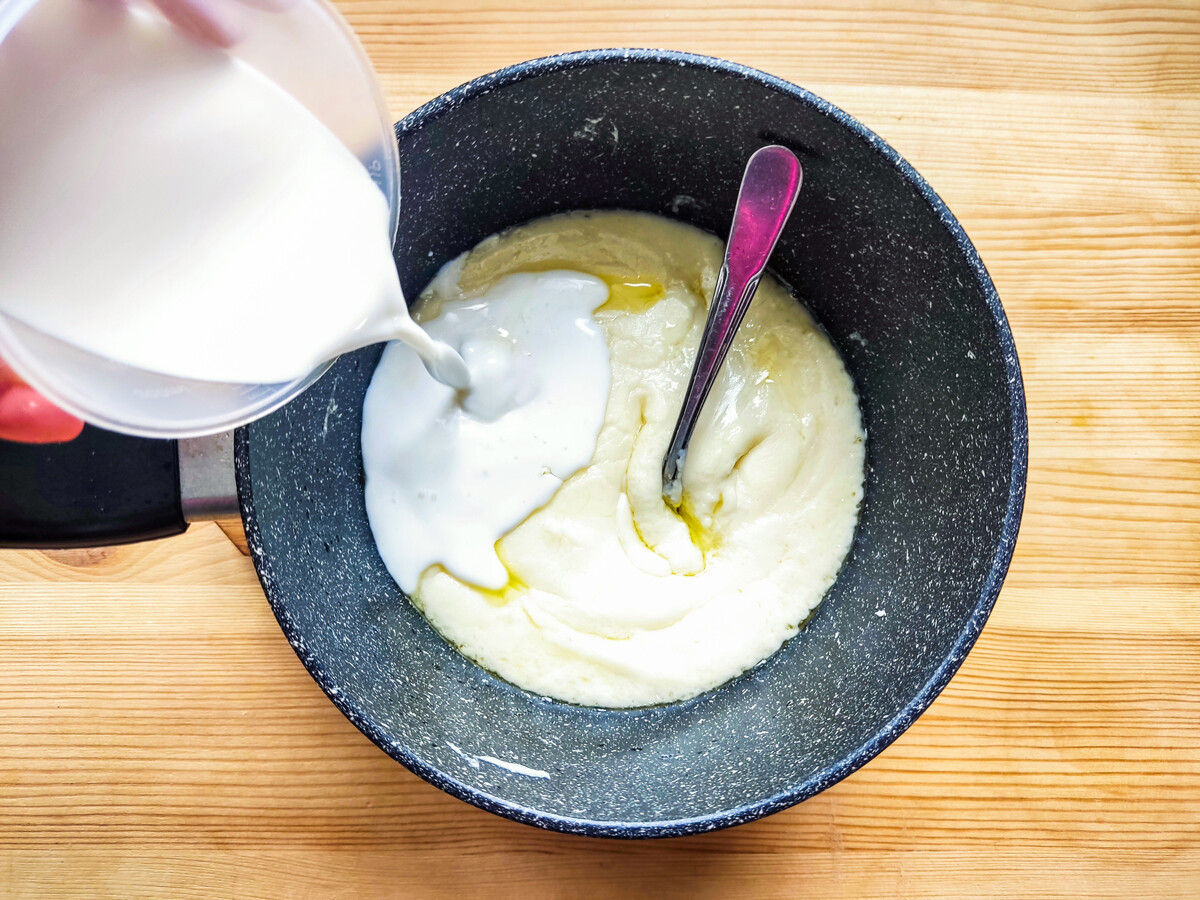
6. After boiling, reduce the heat to a minimum. The salamata should be cooked for quite a while, stirring constantly. If butter floats to the surface, then it means the dish is ready. It should have a golden crust and fat should separate around the edges. But do not add salt to your salamata as the sour cream gives it a pleasant milky taste.
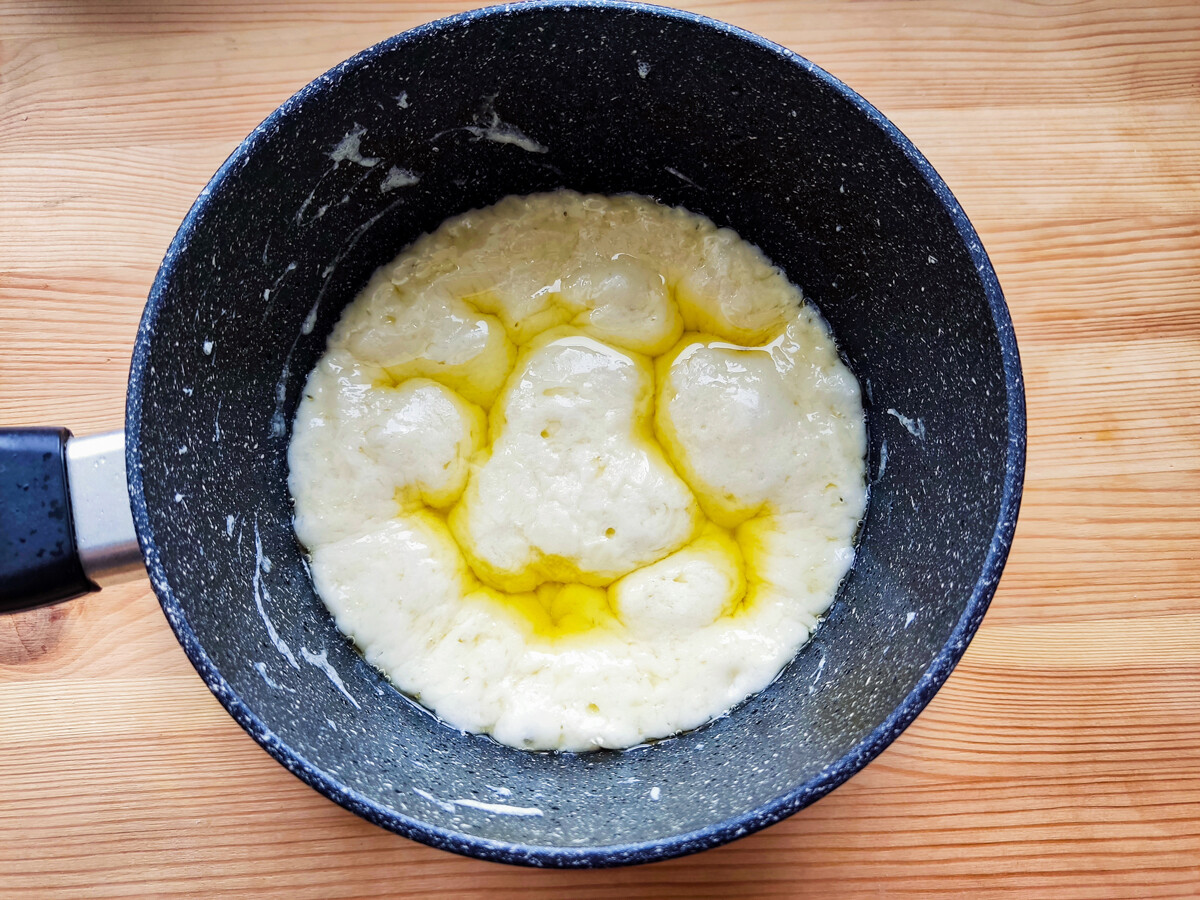
7. Serve the cooked salamata hot in wooden or porcelain bowls. Enjoy!
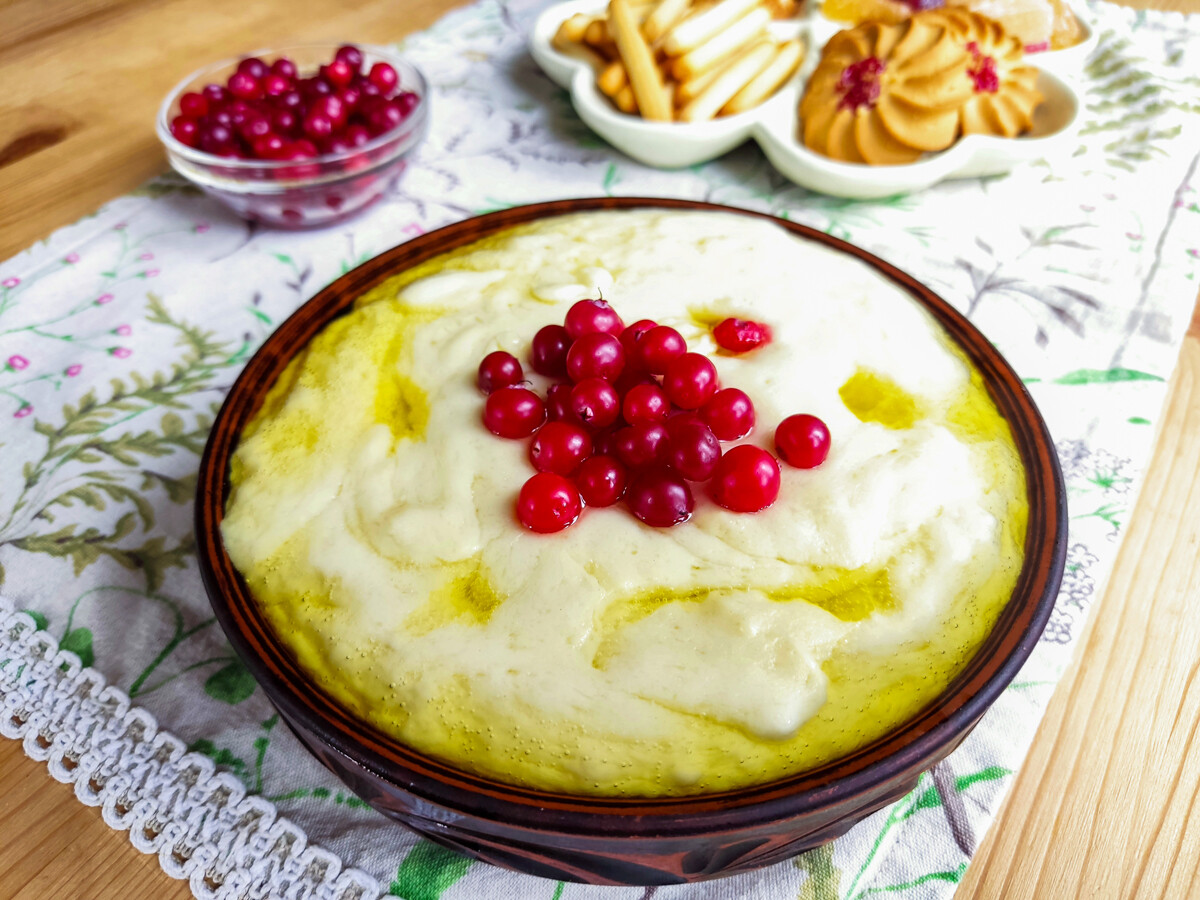
Dear readers,
Our website and social media accounts are under threat of being restricted or banned, due to the current circumstances. So, to keep up with our latest content, simply do the following:
Subscribe to our Telegram channels: Russia Beyond and The Russian Kitchen
Subscribe to our weekly email newsletter
Enable push notifications on our website
Install a VPN service on your computer and/or phone to have access to our website, even if it is blocked in your country
If using any of Russia Beyond's content, partly or in full, always provide an active hyperlink to the original material.
Subscribe
to our newsletter!
Get the week's best stories straight to your inbox